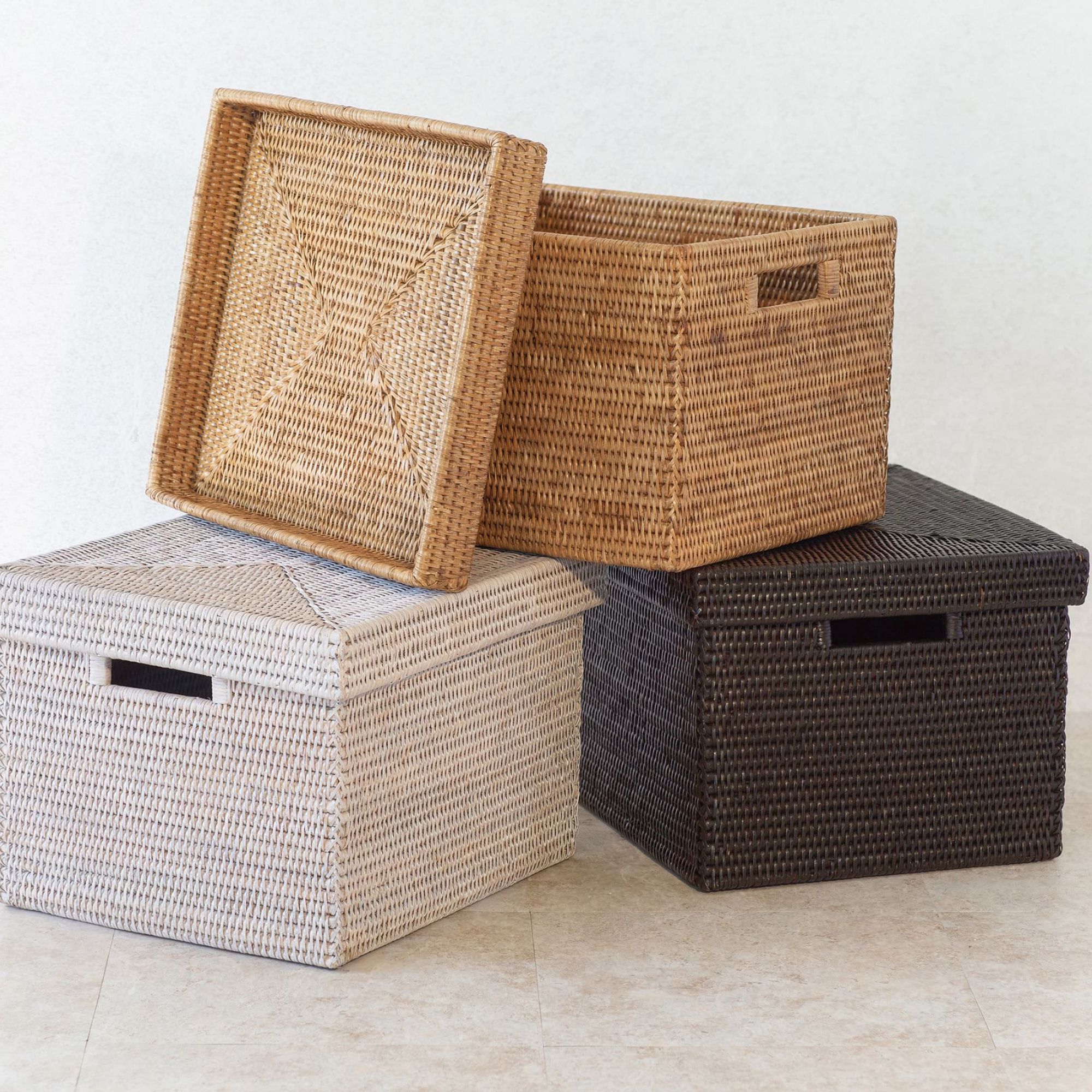How to organize your kids room for back-to-school success, according to experts
Make every day more efficient for you and your child by organizing their room for school


With children going back to school, it's time to get them back into the rhythm of morning school runs, homework, after-school activities, and establishing consistent routines, and often your child's bedroom will be the hub of establishing these daily practices. For that reason, organizing your kids' room can make getting them back into the pattern of school life more seamless and successful.
With all the school work and activities to keep track of, a tidy kid's bedroom can reduce stress by ensuring everything is in place and accounted for, making keeping track of workbooks, clothes, and schedules easier, as well as making your child's bedroom a space where they are more likely to work efficiently and enjoy.
Our experts have suggested the best ways to create an organized space that should keep your child on track for back-to-school success.
How to organize your kids' room for back-to-school success
When designing your children's bedroom for back-to-school routines, visualize how you want the room to look and function. This will help you create a plan of action when it comes to organization and decorating.
Whether you are organizing a boys' bedroom, a girls' bedroom, or a bedroom for a teenager, it's important to consider your child's individual needs and interests to personalize these tips to them.
By following our expert advice, not only will your child's space be organized, but it should also increase their motivation, and productivity and teach them responsibility, inspiring success in more areas than just school.
1. Declutter

The first step, like with organizing any space, is to declutter your kid's room. This will help to reduce distracting visual clutter, as well as create order. You should remove any items that may not be needed this school year, including old textbooks, damaged or inadequately sized school clothes, books they have outgrown academically, and declutter toys that are no longer loved by your child.
Design expertise in your inbox – from inspiring decorating ideas and beautiful celebrity homes to practical gardening advice and shopping round-ups.
'Make sure that all of the clothes in their drawers fit and are school-acceptable' advises Missy Weimer, professional organizer and founder of Life Hack Organizing. 'If everything in the drawers is appropriate, your child can get their own outfits picked out and get themselves dressed.'
Make sure to involve your child in this process since their input will be important and will teach them decision-making skills.
'Teach your child the importance of decluttering. It's not just about cleaning their physical space but also about clearing their mental space. When they understand the value of each object in their room, they're more likely to keep it organized,' recommends Bayu Prihandito, certified psychology expert and founder at Life Architecture.
This process will save time by preventing you or your child from having to regularly comb through a whole array of outdated books and clothes on a daily basis to find what you need.

Bayu Prihandito is a certified psychology expert and life coach specialising in mental health, relationships, mindfulness/EQ, personal development and well-being. Bayu often works with parents to teach effective parenting strategies, advise them on developing healthier relationships with their children, emphasize the importance of understanding their children's emotional needs and cultivate an environment of open communication.
2. Create zones
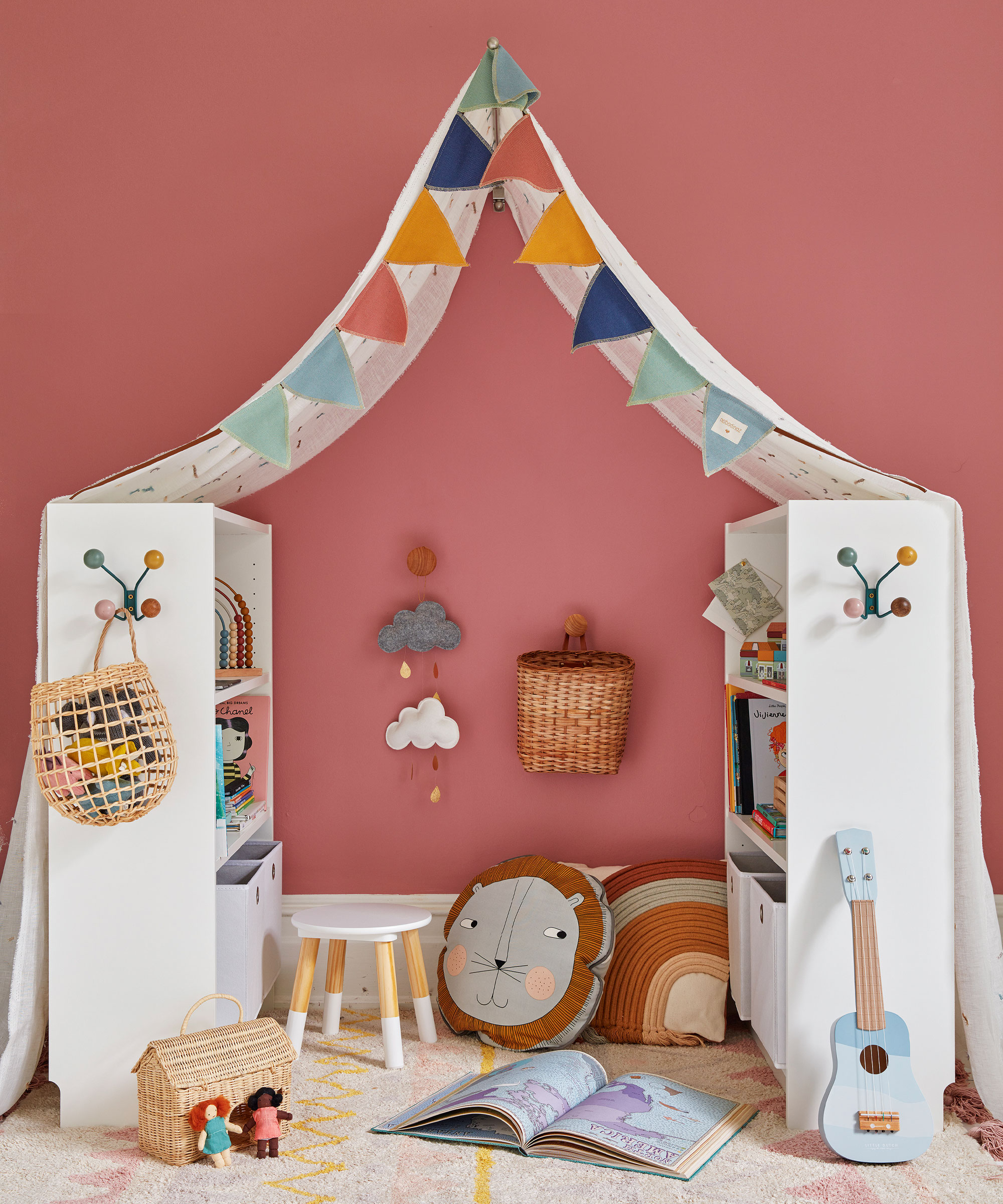
Divide your child's room into zones based on its functions to make it easier for your child to navigate. Clearly define areas for sleeping, studying, playing, and storage. This visual separation promotes a structured routine and helps children associate specific spaces with particular activities, making it easier for them to focus when in designated areas.
The main zones in a child's bedroom should include an area exclusively for sleeping, a study area, a dressing area, and a play area. You can customize other zones based on your child's needs and interests.
'It helps to physically define these areas with furniture or rugs, recommends Benjamin Stenson, a certified home improvement expert and founder of Norsemen Home Remodeling. 'This way, your child knows where to find their school materials and where to unwind.'
'Make sure that your kids have a place to study and review homework. A desk and chair that stays clear of other clutter,' advises Missy Weimer. 'Make a dedicated hook or place for your child's backpack. After school, teach them to deliver the bag to this spot (its 'home'). I like to place the bag right next to your child's desk or designated study area. Include a bin for worksheets that come home and a corkboard for the most recent artwork.'
Bayu Prihanditon suggests, 'Consider setting up a corner with academic books, journals, magazines, art supplies for them to be creative or any material that can promote personal growth. The idea is to create a space that encourages them to spend time on self-improvement.'

Benjamin Stenson, a certified home improvement expert and founder
of Norsemen Home Remodeling, a company dedicated to helping customers make their dream spaces come to life by providing impeccable home remodeling services in Louisville, KY.
3. Storage solutions

Effective storage solutions are key to maintaining an organized kids' room. David Mason, interior designer and the founder of Knobs says, 'Make use of storage containers and baskets. Having designated areas for toys, books, art supplies, and other items will help keep everything organized. Place them in easy-to-reach locations to make tidying up a breeze.'
Employing storage in your child's bedroom is also an easy way to make sure when it's time for your child to put their head down and study, all distractions are out of sight and neatly tucked away, helping them to stay focused.
Elsa Elbert, professional organizer and founder of Composed Living says, 'For younger children, bins and shelves at their height can make it easy for them to access toys, books, and school supplies. For those learning to read, we love labeling everything with words and images!'
Elsa Elbert continues, 'Older kids may benefit from a desk or study area equipped with shelves, drawers, and a comfortable chair for focused homework time. In smaller rooms, be sure to utilize the vertical space – think tall bookcases, or floating shelves that reach up toward the ceiling. We always try to take into account how each individual child learns and focuses best.'
Ensure to consider the best organizational and storage options for clothes and desk items. 'If your child has different types of clothes, such as school, weekend clothes and sports clothes, give them their own drawers or baskets,' says Missy Weimer. Anu Kurup, interior designer at Persimmon Design suggests, 'Use closet organizers or drawers to neatly store clothes. You can even pick out outfits for the week in advance to save time in the morning rush.'
Additionally, a desk with appropriate storage items, such as desk organizers to hold books, papers, and stationery keeps the desk organized, making homework time easier.
We've listed some of our favorite storage solutions, below.
4. Organize filing
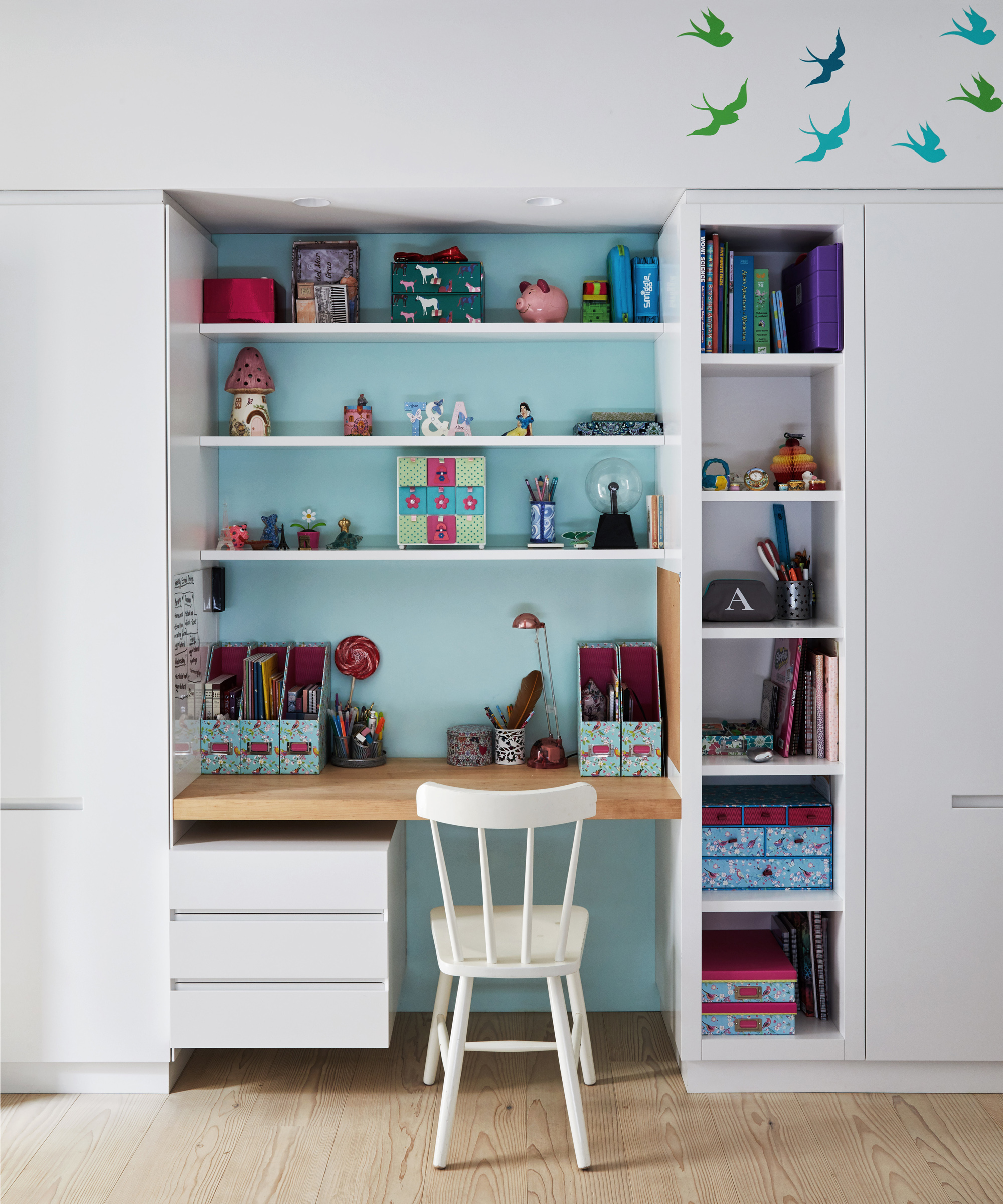
With all the various different classes your kids have, it's often hard to keep up with all the books and files, making finding the right ones for the day or homework task frustrating.
A simple solution is to create a filing system, organizing your child's work and leisure books. Using a filing system or baskets, dedicate separate storage for class, homework, and leisure books, as well as diving up the various books for literature, math, history, science, etc. To do this, we recommend this SETTFRFE file organizer from Amazon. This will help you keep track of them and allow for easy access so there is no frantic searching when the due date arrives.
If your child's work is mostly on a laptop, spend the time creating separate files for each subject, as well as an online to-do list to keep track of activities and due dates.
5. Create a focused desk area
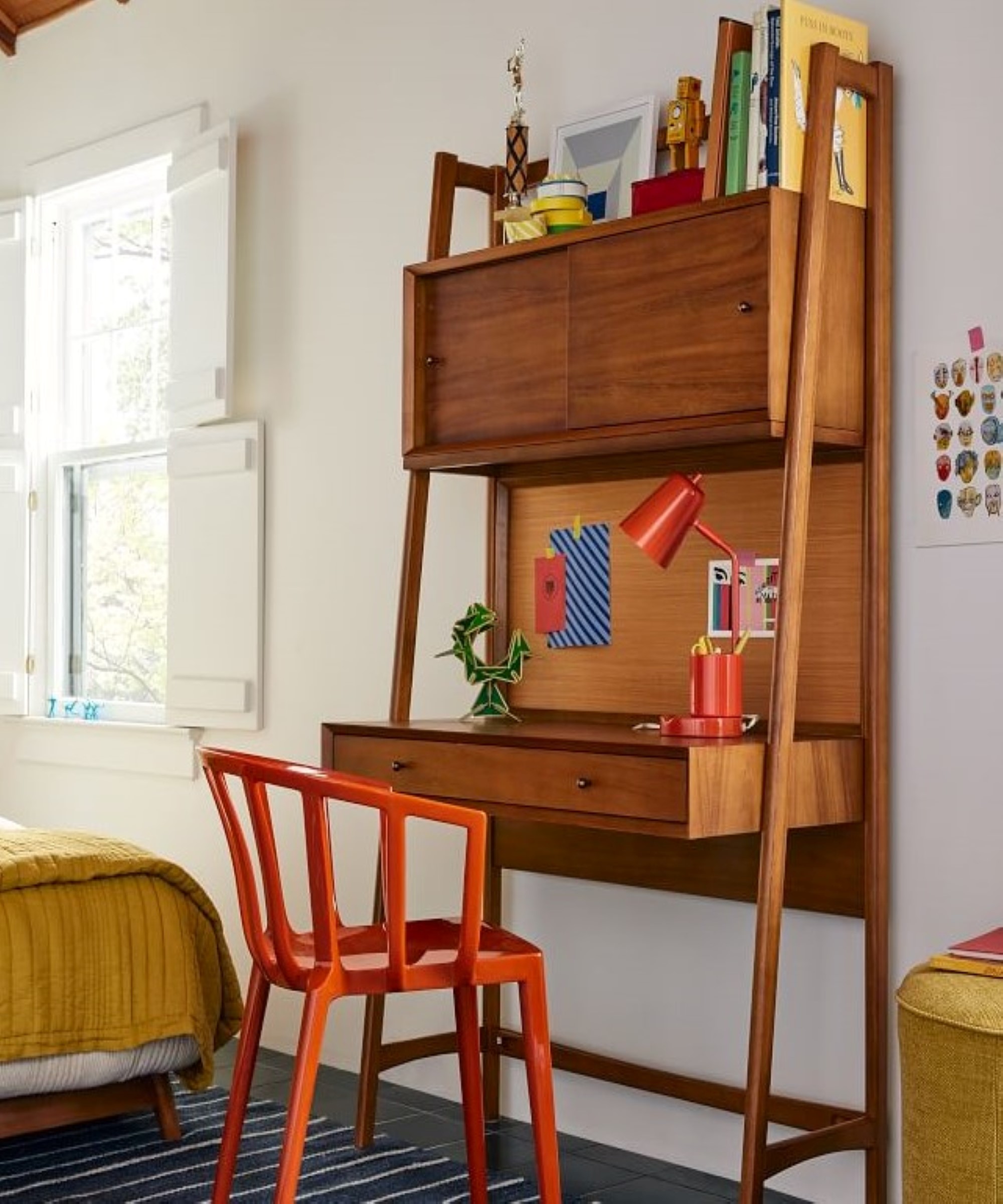
'A desk that suits your child’s work/study habits is important to get them excited about homework,' says Liz Toombs, certified interior decorator at PDR Interiors. 'Determine what features are needed – like drawers for storage, a pencil cup, a hutch on top with a peg board for displaying important papers. Avoid cluttering up the desk with items unrelated to study.'
Creating a focused and organized desk area is also about creating a mindful space that promotes work efficiency.
'I'd recommend creating a space within the room that promotes some sort of mindfulness, designed in a way that minimizes distractions,' advises psychology expert, Bayu Prihandito. 'For example, a dedicated study corner with calming colors, soft lighting, and even a small plant can make a big difference in helping your kid be more present, grounded, and focused when working.'
6. Make a schedule board
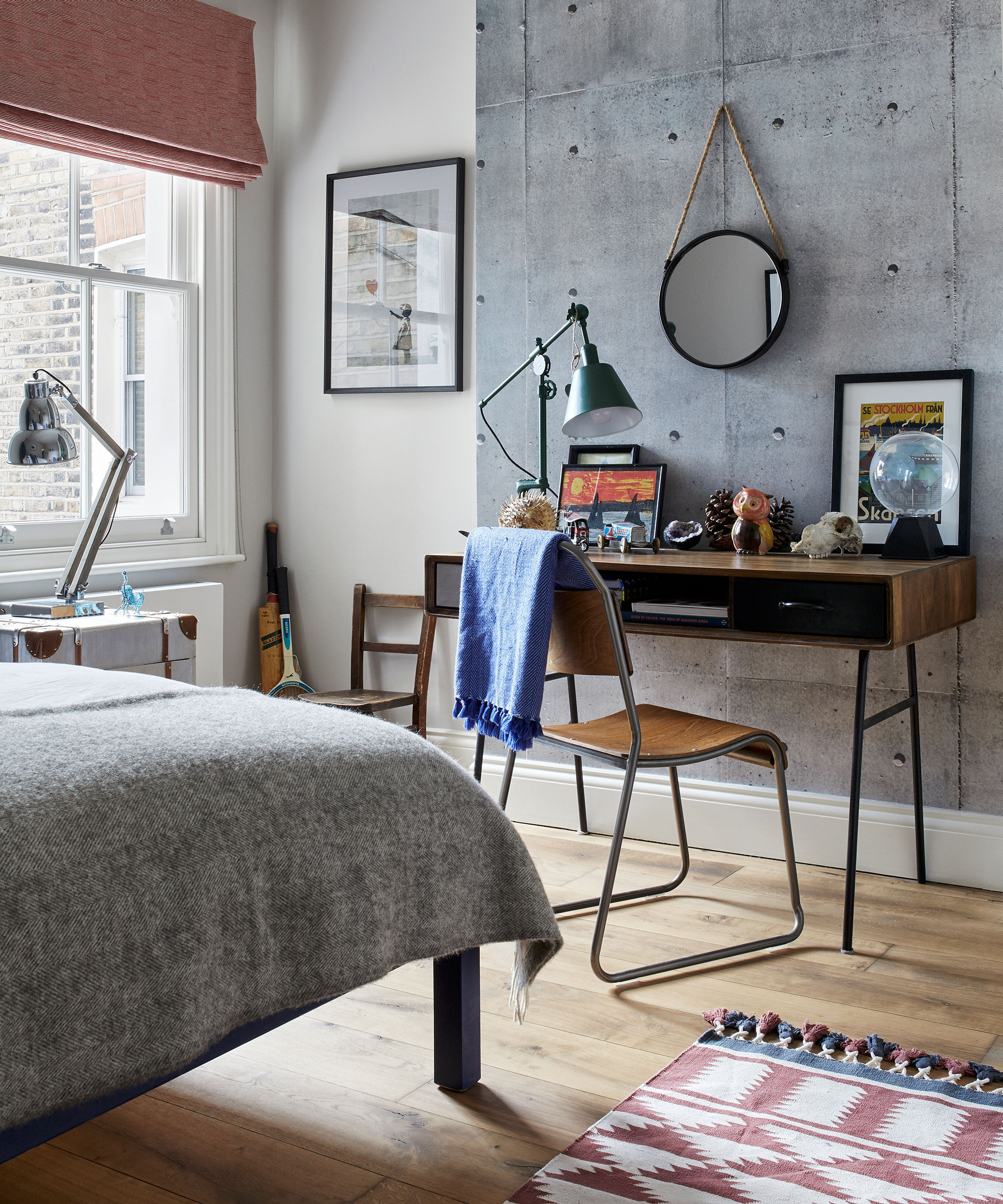
Creating a schedule is a great way to make a visual representation of your child's school and activity schedules to help you both keep on top of it. This schedule should be an aesthetically pleasing option that integrates into the room's decor.
Use wall decals, chalkboard paint, or corkboards to create this schedule. We suggest this peel-and-stick chalkboard wallpaper from Amazon.
Keely Smith, an interior designer expert at Home Stratosphere recommends installing 'A calendar and bulletin board where appointments, sports practices, and school events find their home. This is where clarity reigns.'
Another way to keep your child on schedule is by installing a clock in their room to ensure they are keeping track of time in the morning, encouraging them to be responsible for their own timekeeping.
A tip I've found is great if your children are younger and learning to tell the time is adding arrow labels to certain parts of the clock to lay out their morning routine. This can explain what they should be doing at what time. For example, add labels to the clock for "wake up time" (for example at 7 am), "getting dressed time" (at 7.20 am), "breakfast time" (at 7.40 am), "bag packing" and "putting shoes on time" (at 7.55 am) and "leaving time" (at 8 am). This will make it easier for them to take initiative and stick to their getting-ready-for-school schedule, meaning you can relax.

Keely Smith is an interior designer expert and artist at Home
Stratosphere, a leading interior design studio in North Vancouver, BC. With over 10 years of experience, she's helped numerous businesses and individuals realize their interior design goals.
7. Implement a daily routine
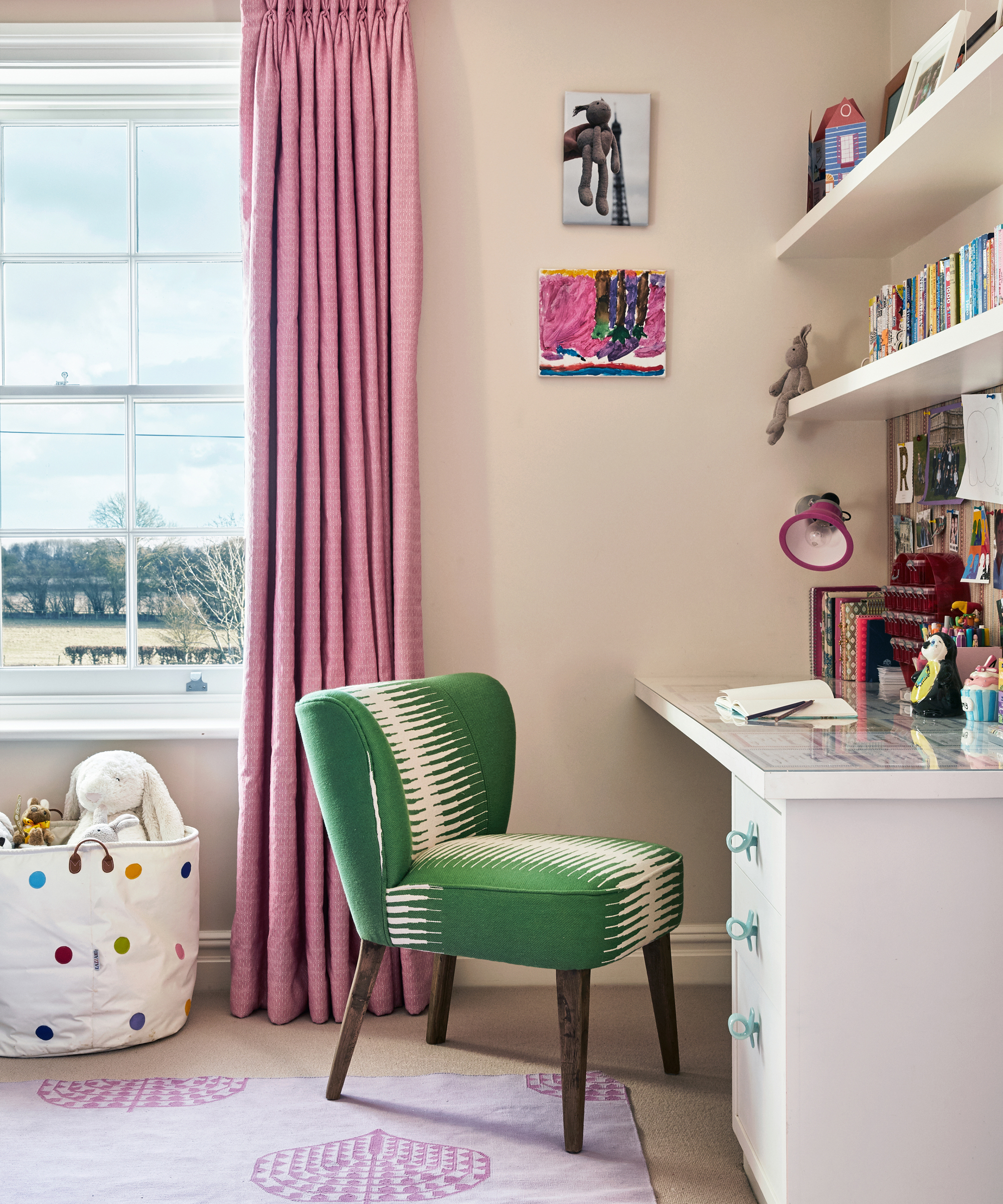
Part of organizing your child's room for going back to school is to create daily and weekly routines to encourage consistent and practical behaviors that make every day run more smoothly. There are a few different ways this can be done.
Anu Kurup, interior designer at Persimmon Design recommends, 'Set up a morning routine chart. Include tasks like brushing teeth, getting dressed, and packing lunch. This helps your kids start the day smoothly.'
Certified home improvement expert, Benjamin Stenson recommends initiating a tidying routine: 'When I helped a family with this, we made it a habit for the child to put away toys and school items before bedtime. Consistency is key here. Over time, it becomes second nature for them.'
Creating a routine for planning clothing is also a great time saver. Keely Smith says, 'I remember the Sunday outfit ritual—a game-changer. By choosing a week's worth of clothes in advance, you're not just making mornings more efficient; you're also fostering a lesson in planning and responsibility.'
You can even arrange baskets or bins of clothes for each day of the week, for example, if they have dance on Monday, PE on Tuesday, and cookery on Wednesday, you can lay out these clothes in the baskets for each day, saving you time in the morning.
What furniture items can make working more enjoyable for kids?
David Mason, interior designer, suggests, 'Invest in colorful seating options. From comfortable sofas to bean bag chairs, having an inviting place to sit can make homework time more fun for your kids.'
Mohammed Ahmed, interior designer and Founder of The Home Guidance Blog reminds us, 'As kids grow, their organizational needs change. Ensure the room's organization is age-appropriate. Younger children may need more accessible toy storage, while older kids may require space for textbooks and electronics.'

Lola Houlton is a news writer for Homes & Gardens. She has been writing content for Future PLC for the past six years, in particular Homes & Gardens, Real Homes and GardeningEtc. She writes on a broad range of subjects, including practical household advice, recipe articles, and product reviews, working closely with experts in their fields to cover everything from heating to home organization through to house plants. Lola is a graduate, who completed her degree in Psychology at the University of Sussex. She has also spent some time working at the BBC.



